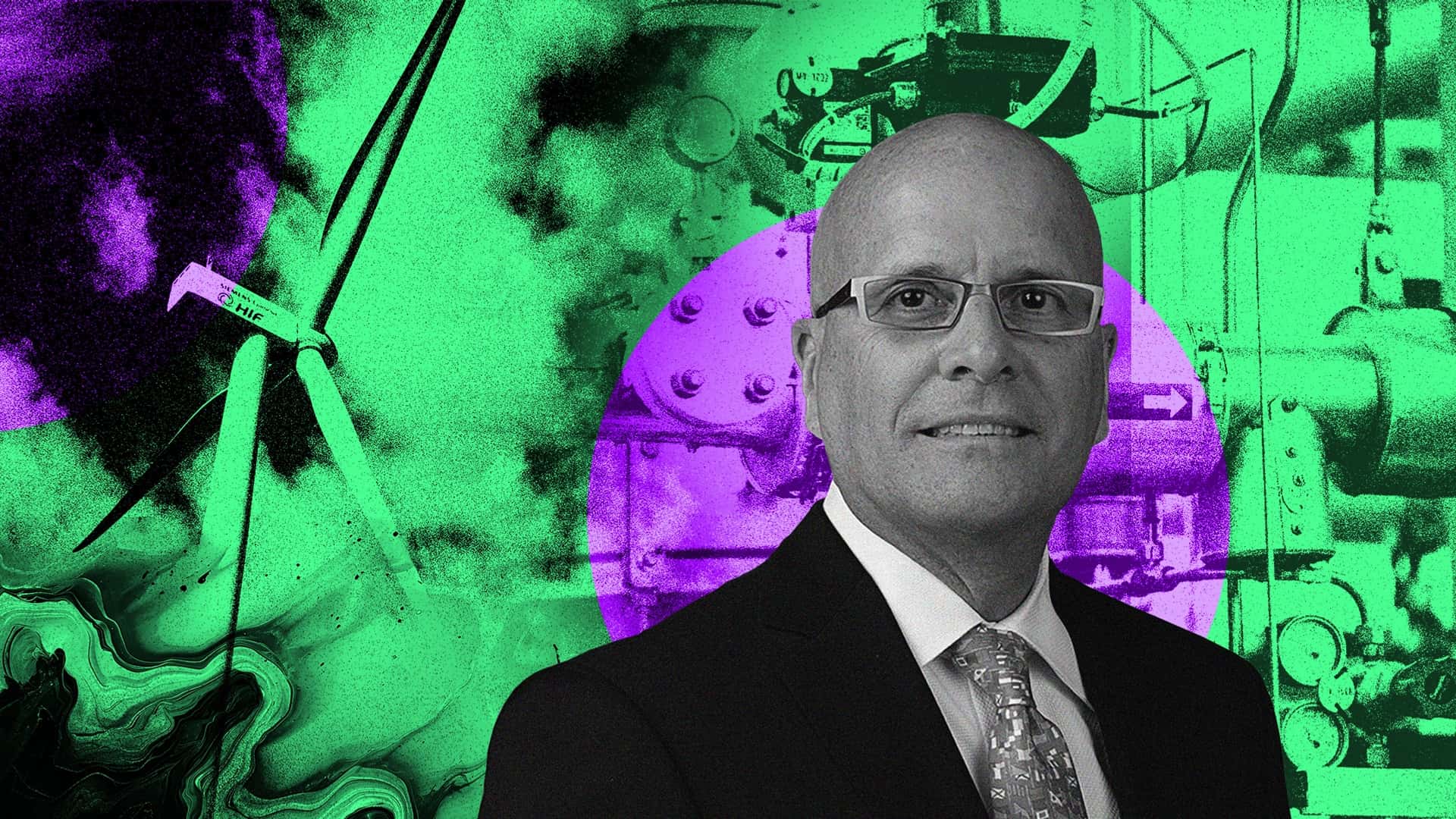
E-FUELS CAN'T WORK IN CARS UNTIL THEY WORK IN PLANES. HERE'S WHY
HIF USA CEO Renato Pereira says his company can't rely on individuals to fill up on E-fuels at the pump.
At a time when wholesale EV adoption seems imminent, E-fuels represent a ray of hope for internal-combustion enthusiasts worldwide. In theory, an affordable, sustainable, readily available, and clean-burning fuel means internal combustion engines could live on indefinitely.
Just one problem; While E-fuels are already in production, it'll be ages before you can buy some at your local gas station.
"Right now, the costs [of producing E-fuels] are high," HIF USA CEO Renato Pereira tells Motor1. "The costs are high because the equipment is new. That's brand new technology."
HIF, or Highly Innovative Fuels, describes itself as the world's leading E-fuels company. It produces carbon-neutral fuels in several countries, intended for use in cars, boats, and planes. HIF's proprietary mixture, produced from hydrogen and CO₂ using wind energy, can run through gas-powered cars without any modifications to the engine, making it an appealing choice for enthusiasts who want to enjoy their internal combustion engines in an environmentally friendly manner.
It's a tantalizing idea, but reaching the point where HIF's E-fuels are cheap enough to offer to the masses is still likely years away, as the means to produce, store, and distribute the fuels are in their earliest phases. Average buyers can't subsidize the construction of these expensive production facilities; they'll demand an affordable, finalized product which doesn't yet exist.
"If you're an individual like you or me, you can say, 'I'm willing to pay a little bit more money [for E-fuel over conventional gasoline].' But we can't rely on that for the construction," Pereira tells Motor1. "We either need a system through regulation or we need to support the construction of these production facilities [through investment] so that the costs can come down,"
"Every time you build a new facility, the cost goes down," he says.
Because these production facilities can take up to five years to build, HIF needs partners who are willing to commit to higher costs up front, before the facility is built.
"In order to build [these factories], we need a long-term commitment at a fixed price," says Pereira. "So we need somebody to say, 'I'll pay you this amount for this fuel for 15 or 20 years,' and then we can rely on that commitment to go to the banks so they can lend us the money for those facilities."
"Right now, the costs [of producing E-fuels] are high. The costs are high because the equipment is new. That's brand new technology."
Porsche has pioneered in the E-fuel sector. The German carmaker has invested more than $100 Million into HIF Global since 2021 in return for a long-term stake. The money helped fund HIF's proof-of-concept facility in Chile. As a proof of concept, and to generate publicity, Porsche has used the clean-burning fuel in many of its special projects. On one recent expedition to the world’s highest volcano, Porsche set a record for reaching the highest altitude driven, courtesy of a highly modified 911 Carrera 4S running on E-fuel.
“We see ourselves as pioneers in E-fuels and want to drive the technology,” Porsche R&D board member Michael Steiner said in a 2022 statement. "This is one building block in our clear, overall sustainability strategy."
But it's not cars where the first proper E-fuels are poised to be used at scale, says Pereira. It's in "no alternative" modes of transportation, like transatlantic shipping boats and passenger airliners, where full-on electric propulsion adoption is extremely unlikely. It's in these industries where E-fuels have the biggest environmental benefit, as no massive investment to modify the existing methods of propulsion is needed.
Governments are beginning to realize the benefits. The European Union mandated that sustainable fuels should make up at least six percent of fuel pumped in its airports by 2030. By the year 2050, that number is required to be 70 percent. In the United States, a $1.25-per-gallon credit is awarded for sustainable fuel blends that reduce emissions by at least 50 percent.
"We have a clear market that we can serve," Pereira says.
Ironically, it's not the airlines themselves committing to these long-term agreements with companies like HIF, but rather traditional oil firms.
"The burden is mostly on the fuel distribution companies, the oil companies, because they're the ones who supply the fuel at the airports," Pereira tells Motor1. "So we're going to them and saying, 'I have this fuel, please sign up on a long term agreement at this price that enables us to build this facility.'"
The hope for car enthusiasts, then, is that enough investment and government regulation leads to more factories, and in turn, proliferation of E-fuels. If "no-alternative" modes of gas-powered transportation (i.e. planes and boats) are pushed to E-fuels, either through regulation or market forces, prices will drop for all consumers.
Long-term, E-fuel manufacturers strive to reach a point where E-fuels are cheap enough to match or even beat conventional gasoline prices; It's the only scenario where E-fuels would be widely adopted by individuals, barring government intervention.
Considering the sloth-like progress of lawmaking and the length of time necessary to construct E-fuel production facilities, it's going to take a while for E-fuels to become mainstream. Pereira isn't sure when you might be able to pump your own sustainable fuel. Probably years but maybe decades. We'll be here, car keys in hand, eagerly waiting.
More on E-Fuels
2024-06-27T14:28:42Z dg43tfdfdgfd